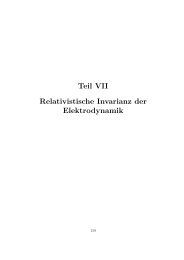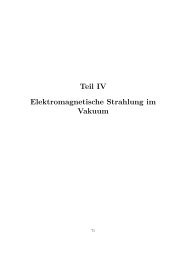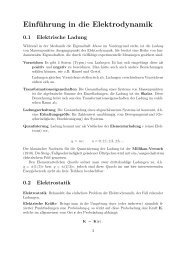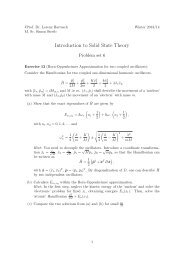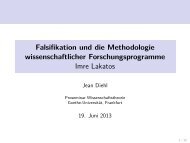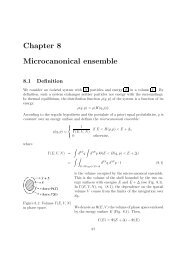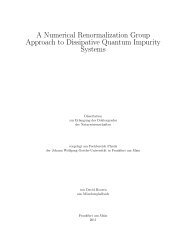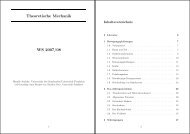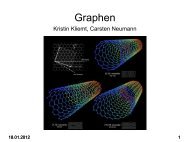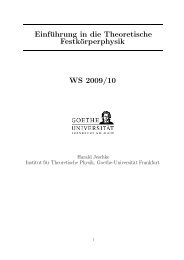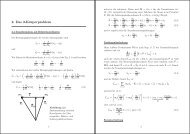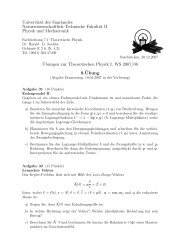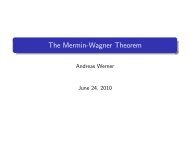Microscopic Modelling of Correlated Low-dimensional Systems
Microscopic Modelling of Correlated Low-dimensional Systems
Microscopic Modelling of Correlated Low-dimensional Systems
Create successful ePaper yourself
Turn your PDF publications into a flip-book with our unique Google optimized e-Paper software.
Chapter 1: Introduction 5<br />
small nearest neighbor exchange constant due to its dilute character. The term ‘dilute’<br />
refers to materials formed by transition ions surrounded by non-magnetic transition ions<br />
such as Zn 2+ (3d 10 ) or V 5+ (3d 0 ) and well separated from the next transition magnetic<br />
metal ion. K2V3O8 presents an unusual spin reorientation effect when applying magnetic<br />
field. This effect can be understood when including anisotropies in the Hamiltonian which<br />
describes the system. We show, however, that the proposed Hamiltonian fails to explain<br />
the experimental observations. By studying the electronic and magnetic properties <strong>of</strong> this<br />
compound, we show that our results present a new view over the controversy arising from<br />
recent experimental results.<br />
Our methodology and results on all the above mentioned compounds provide a new pers-<br />
pective on the parameters underlying the traditional theoretical approaches, making our<br />
study not only essential to understand future experimental results, but interesting in their<br />
own right.<br />
This thesis is organized as follows: the first part <strong>of</strong> Chapter 2 is dedicated to the density<br />
functional theory and to the basis sets used for solving the DFT Hamiltonian utilized in this<br />
work, namely the FP-LAPW and LMTO/NMTO methods. The second part <strong>of</strong> Chapter<br />
2 is dedicated to review the effective models employed in our study. Because electronic<br />
properties are given in the reciprocal space, we provide in Chapter 3 the different Brillouin<br />
zones associated to all <strong>of</strong> the unit cells for the studied compounds. In Chapter 4 we introduce<br />
the concept <strong>of</strong> metal-organic framework and the current state <strong>of</strong> art in this field. This is<br />
followed by a description <strong>of</strong> the compounds studied and the significant questions we address<br />
in this thesis. In Chapter 5 we present our methodological procedure and our findings.<br />
Finally in Chapter 6 we give a brief summary and overlook.



